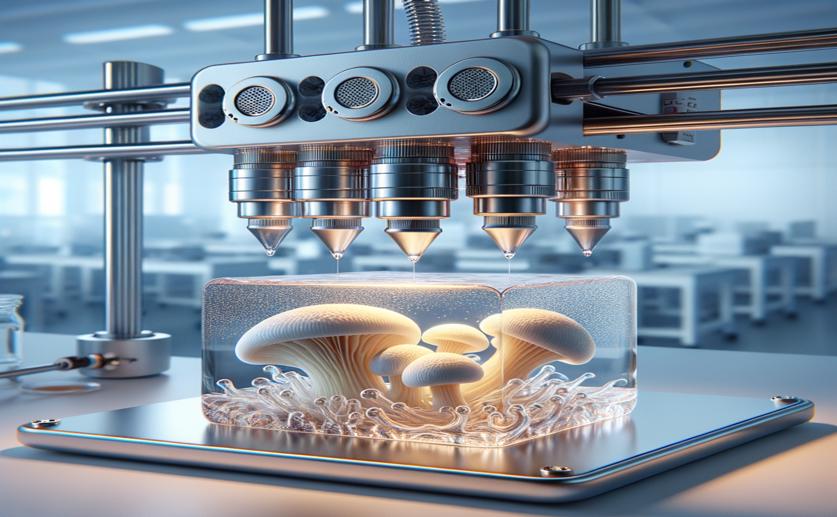
3D Bioprinting Edible Gel with Living Oyster Mushroom Cells
Jenn Hoskins
10th April, 2024

Image Source: Natural Science News, 2024
Key Findings
- Researchers at the University of British Columbia developed a new hydrogel for 3D printing with mycelium
- The mycelium-infused hydrogel can grow post-printing, creating living, eco-friendly materials
- The bioprinting process does not require a sterile environment, reducing complexity and cost
References
Main Study
1) 3D Bioprinting of Food Grade Hydrogel Infused with Living Pleurotus ostreatus Mycelium in Non-sterile Conditions.
Published 8th April, 2024
https://doi.org/10.1021/acsabm.4c00048
Related Studies
2) Three-Dimensional Printing of Living Mycelium-Based Composites: Material Compositions, Workflows, and Ways to Mitigate Contamination.
3) Advanced Materials From Fungal Mycelium: Fabrication and Tuning of Physical Properties.
4) Lignocellulose degradation: An overview of fungi and fungal enzymes involved in lignocellulose degradation.



 12th March, 2024 | Jim Crocker
12th March, 2024 | Jim Crocker